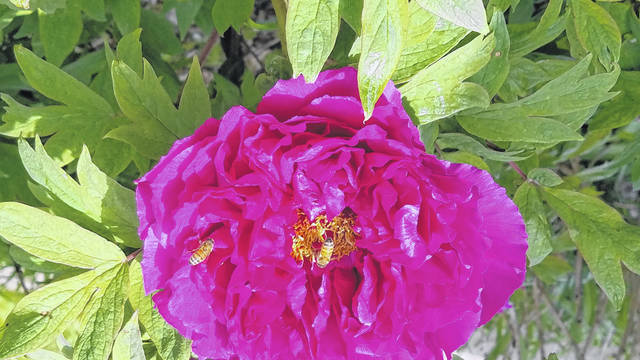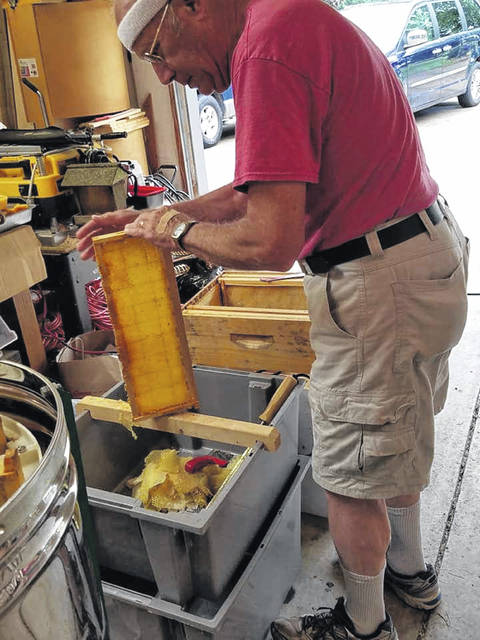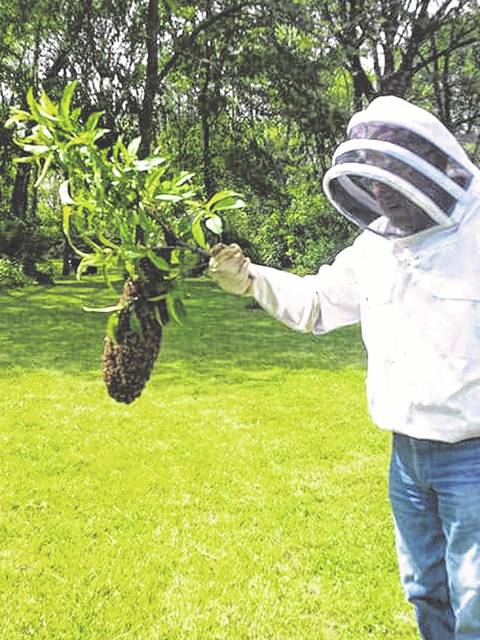


The end of July through August marks the peak honey harvesting season for Greene County beekeepers.
Regional hobbyists, most of whom operate out of their own backyards, are hard at work getting their hives ready for extraction. However, to successfully care for these plucky little insects, beekeepers must always be thinking – and working – one step ahead.
All year, members of the Greene County Beekeeper’s Association (GCBA) tend their hives, ensuring they survive harsh winters, protecting them from disease, and preventing swarms from escaping in the spring.
Traditionally, beekeepers have pulled honey from their hives in September. However, in the last ten years, apiarists have shifted to extract honey earlier in the year, to better prepare the winter generation of honeybees to survive the long months ahead.
“Bees that make it through the winter are physiologically different than those that do not,” said Terry Lieberman-Smith, communications director for the GCBA. “They need ‘fat bodies,’ which function similar to a liver.”
Apiarists have to constantly be on guard against varroa mites. These mites, whose scientific name is varroa destructor, will attack honeybees and feed on their fat bodies. Honeybees are also susceptible to various kinds of viruses, which can decimate their numbers.
“We’ve shifted to taking honey earlier so that we can focus on making sure that the generation taking care of winter bees is healthy and virus-free,” Lieberman-Smith said.
Once the bees are finished filling honeycomb cells, the cells are capped with a thin layer of beeswax. To extract honey, beekeepers remove frames of honeycomb from their box, called a super. Then, they pare off the beeswax with a heated knife and place the uncapped frames into an extractor.
“It’s basically a big salad spinner,” Lieberman-Smith explained.
Centrifugal force throws the honey out to the walls of the extractor drum. Oftentimes, extractors are cranked by hand. The honey pools down into the bottom, where it is drained, filtered, and ready for bottling.
If that sounds like a lot of work, it is. However, keeping honeybees is incredibly rewarding, according to Lieberman-Smith, not only for the beekeepers, but for the surrounding community.
“Honeybees make great neighbors,” she said. “They keep fruit trees blooming and flowers pollinated.”
Local honey also takes on the flavor of local flora. Spring honey is usually lighter and more delicate. Later season honey has a more robust flavor, and is good in pies and barbecue sauce. Local honey also has the lowest carbon footprint of all sweeteners, including maple syrup and agave.
Most beekeepers in Ohio are hobbyists. However, even the most casual practitioner can find themself with a bounty of honeybees.
”They’re like potato chips,” Lieberman-Smith said. “You start off with one hive, then you split and make two hives out of it. Someone calls and says ‘I’ve got bees hanging on my picnic table’ and now you have three. Then you decide you want some nukes [small hives] and at that point you’re all in.”
The Association provides 4-H sponsorship every year for young apiarists at the Greene County Fair, and supply a smoker and other hive tools for winner of 4-H competitions. The GCBA has not gone unaffected by the coronavirus pandemic, though it hasn’t stopped the organization from ramping up their programming in the absence of face-to-face meetings.
“Beekeepers are constantly adapting based on weather conditions, environment, and the bees themselves,” Lieberman-Smith said. “We learn how to pivot really quickly, because we work on their schedule.”




